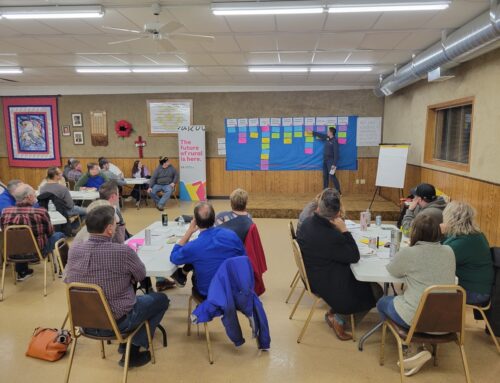Your Community’s Pivot toward Thriving
By: Paula Jensen
When I started marching band as a sixth-grader in my rural public school, the most difficult thing I had to learn was to pivot. The instructions went something like this — on beat two of the third measure, you will pivot on your right foot and turn toward the left. By the next downbeat, you will have turned ninety degrees to the left, with the left foot out and ready to make the step off on one. If I overstepped or pivoted too soon, then the entire column of musicians behind me would be off and everything could fall apart. I know this because it happened. Panic ensued. But thankfully, someone was looking ahead, saw the error and picked up the pace to right the wrong.
During the pandemic, people are using the word pivot as a reference to how we must change the direction of our day-to-day activities to manage our new ways of living. Communities are also needing to pivot due to economic shifts, remote work, school and business closures, increased demand for housing and more. To thrive rather than just survive, our communities must plan to pivot and claim their own success.
These efforts to pivot and create a thriving community can be accomplished by gathering a small group of engaged residents that are guided by this four-step process: 1) start by assessing the current community conditions 2) create a purpose with three to five pivot strategies 3) layout an implementation plan 4) celebrate, evaluate, then repeat the steps every three years, or so.
The first step of assessment is a general one—carry out a preliminary investigation of the current community condition to help in the selection of the pivot strategies. Start by gathering some numerical facts and demographics that provide a snapshot of the community. A core group of local leaders should also capture people’s perceptions and priorities for the community over the next two or three years through conversations. A good question, to begin with, is, “What would our community look like if it were thriving?”
The second step after analyzing the assessment (and taking a good look at the community’s strengths), is to write a one-sentence purpose statement that will guide the work. Next, choose three to five pivot strategies that align with the purpose and the assessment. Choose pivot strategies that satisfy both of the following conditions:
-
The strategy addresses a major community problem, and;
-
The community has some available assets to make substantial progress on this strategy. (For example, a main street rich with impressive buildings ready for rehab, a passionate group wanting to start a local foods co-op, a thriving culture of microbusinesses ripe for development, or an empty lot available for new housing)
During step three, gather a group of passionate community shareholders. Ask the group to narrow down the pivot strategies to one or two. Then work collaboratively to lay out an implementation plan. This plan can be broken down into 90-day increments laying out the actions, deliverables, expected outcomes, responsible parties, budget, and deadlines needed to accomplish the prioritized strategies over the next 12 months.
Step four recognizes that learning along the way is essential and conditions are constantly changing. So first and foremost, celebrate your successes as they happen. Then, evaluate and improve on the implementation plan making sure to monitor your outcomes and inform the community of your progress.
This work requires tenacity and a foundation of sustained leadership, strong partnerships, and resident engagement. By involving a multitude of people in this process—the community will claim its own success and pivot toward thriving.






